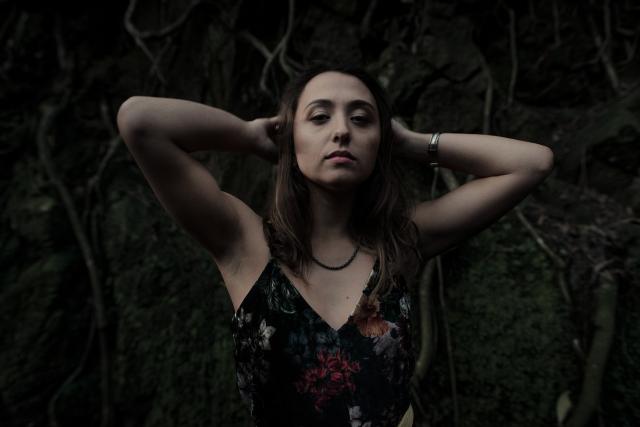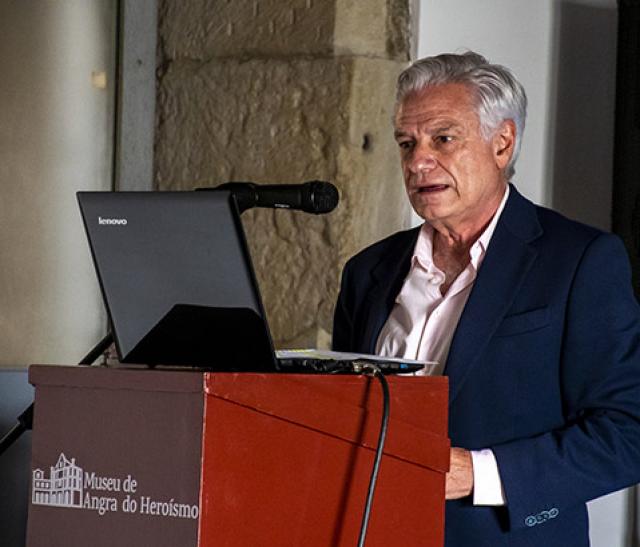Autor: Paula Gouveia
They were kept for 60 years in a shoebox. Stripped of its former function, the box contained photographs, photographic negatives, questionnaires and old newspapers, carefully collected by Manuel Inácio de Melo between 1958 and 1981.
From the shoebox he received from one of the entrepreneur’s and philanthropist’s grandsons, Luís Bettencourt Reis made a book. "Por M.I.M. - O livro de Manuel Inácio de Melo que ficou 60 anos fechado num caixa de sapatos" was presented at Santo André Church - Carlos Machado Museum, by Father Dr. Luís Miguel Proença Leal.
The first publication by Escritor Edições reveals the days of the founder of the Melo Travel Agency and co-founder of Clube União Sportiva as a pilgrim in 1961, through the articles he published in the press and his photographs. It also reveals his collection of prayers by São Miguel pilgrims, which were not yet on paper.
In the first chapter, the reader will find the prayers that this philanthropist collected on the island of São Miguel. In 1961, explains the author, Manuel Inácio de Melo sent out a questionnaire to all the masters of pilgrimage on the island, asking for prayers that had not been written down, with the intention of making a book. And the result was surprising: of the 34 answers to the questionnaire, not one prayer was repeated, which clearly demonstrates the diversity of prayers that existed, says Luís Bettencourt Reis.
From these answers to the questionnaire, Reis says that we can see that many “mestres” were illiterate people - "people wrote the way they spoke, with spelling mistakes, and there are prayers written by other people at the request of mestres who could not write". There is another aspect that stands out: "the humility with which they address Manuel Inácio - they are country people".
On the other hand, "there are prayers that point to specific situations, such as the war in Overseas Territories or communist influence, which was seen as pernicious at the time".
The second chapter of the book is dedicated chronicles, which Manuel de Inácio de Melo himself gathered, with the handwritten title "Os dias da minha romaria" (The days of my pilgrimage). It focuses on his diary and the photographs of the pilgrimage he made at the age of 63, as part of the Salga pilgrimage group. "There are 10 publications that appeared weekly in the press, which are the diaries of his 1961 pilgrimage," complemented by unpublished photographs from that pilgrimage, he explains.
The third chapter - "From the newspaper to a memory of the people" - republishes the articles he wrote for newspapers between 1958 and 1981, with "Por M.I.M.", the acronym of his name. Publications about pilgrims and the pilgrimages of São Miguel, where he talks, for example, about the creation of the first “rancho de romeiros” in Ribeira Grande or even the possible creation of one in Ponta Delgada.
Luís Bettencourt Reis explains that, when he received the collection, "I did not intend to publish it. I am the master of the São José pilgrimage group and I thought I might find a prayer I could use. But when I realized that his goal was to publish a book, I thought I could honor his wishes and his memory, and make a contribution to the history of Lenten pilgrimages."
The entrepreneur, creative and philanthropist
Manuel Inácio de Melo was born on February 25, 1898 in the parish of Salga, in Nordeste. He began his education at Achadinha school, until he came to Ponta Delgada where he worked as a sailor. He joined the army, finished the 3rd year of secondary school, the commercial course and was an employee of Banco Micaelense. He founded the Melo Travel Agency and co-founded the União Sportiva Club. Between poetry, prose, journalism and opinion pieces, writing has always been part of his life. He wrote for the newspapers Açoriano Oriental, Correio dos Açores and Diário dos Açores, and for 31 years he wrote a section on hunting in the newspaper A Ilha under the pseudonym ALJAVA. In 1948, he published the book "A passagem por São Miguel da imagem de Nossa Senhora de Fátima". He was honored by having a street and the Salga Primary School named after him. He died on August 31, 1986.





